Marriage in Africa represents more than just a wedding ceremony: it is a cosmic event that unites not just two souls, but two cultural universes, two ancestral lineages, two entire communities that come together in a single celebration of life and continuity. As an ancient African proverb states, 'when two people are united in marriage, so is the village' - a truth that manifests itself in every gesture, colour and tradition that characterises these extraordinary celebrations.
The Bridal Visual Universe: When Clothing Becomes Language
West Africa: A Palette of Living Meanings

In the vastness of West Africa, countries such as Nigeria, Ghana, Senegal and Mali transform marriage into a chromatic explosion that transcends mere aesthetics. Traditional dresses are not just clothes, but veritable textile encyclopaedias that tell millennia-old stories through every fibre and every shade.
Nigerian brides wear richly decorated fabrics, often handmade using techniques handed down from generation to generation. Their headdresses, called 'gele', represent one of the most sophisticated art forms of African dress: these sculptural structures, made up of skilfully woven strips of fabric, symbolise dignity, femininity and social status. Each fold, each volume of the gele tells a different story, creating hairstyles that are true architectural works in miniature.
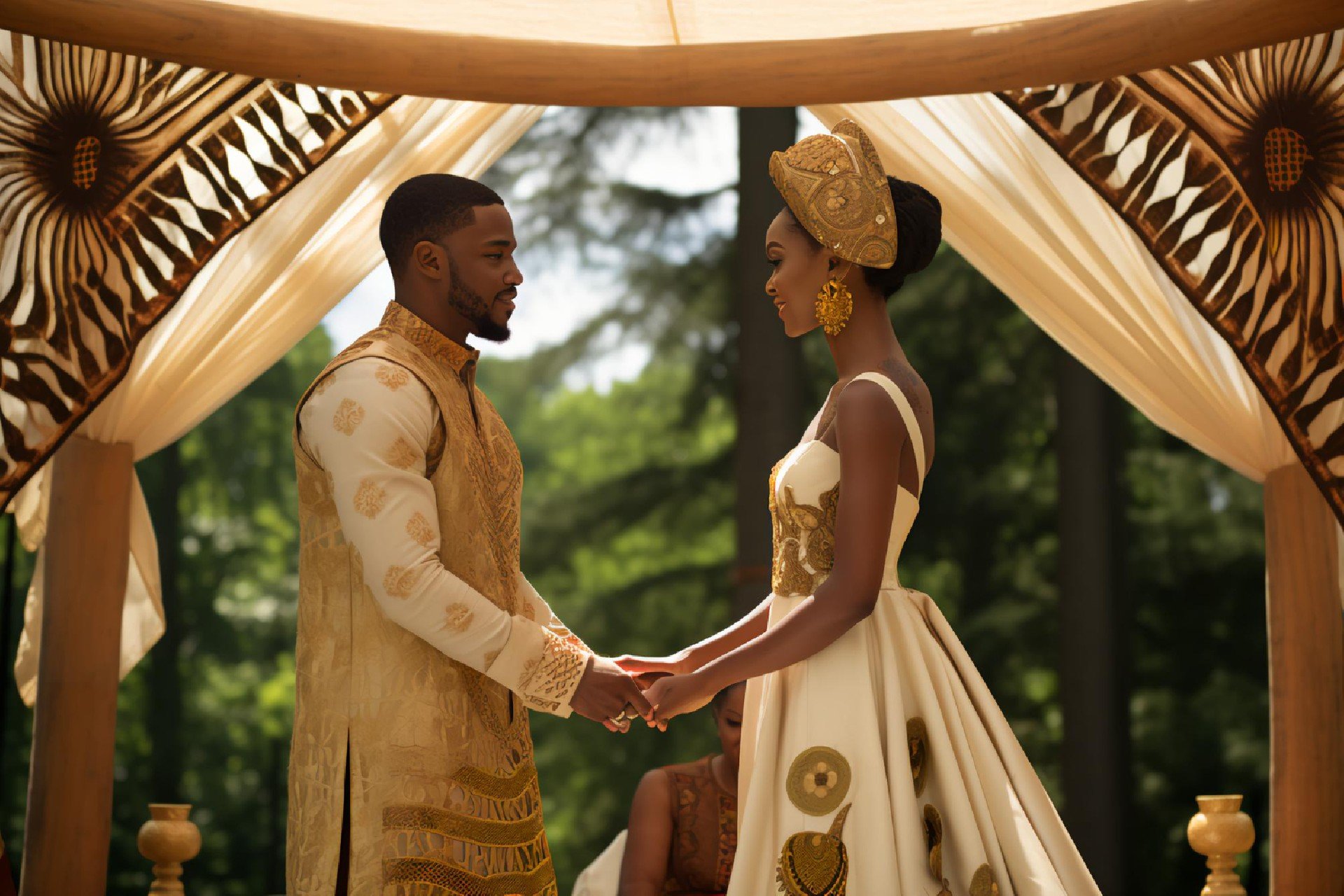
In Ghana, traditional colours take on profound meanings: red represents ancestors' blood and life force, gold symbolises prosperity and spiritual wealth, while green evokes fertile land and home. Kente fabric, with its complex geometric patterns, is not just a fabric but a cultural code that communicates tribal affiliation, social position and the spiritual aspirations of the bride and groom.
East Africa: The Bridge Between Tradition and Modernity
Moving towards East Africa - Kenya, Ethiopia, Tanzania - one perceives a fascinating dialogue between ancestral heritage and contemporary influence. Oriental brides often choose long dresses decorated with motifs that tell family and tribal stories, accompanied by traditional jewellery that act as protective talismans.
Beads and necklaces are not mere ornaments, but tools of non-verbal communication that indicate the age, marital status, fertility and even the character of the bride. Each piece of jewellery has a specific function: some protect against the evil eye, others promote fertility, and still others strengthen the bond with ancestors.
Central and Southern Regions: Family Chronicles Woven Through Time
In countries such as Angola, Mozambique, South Africa and Zimbabwe, traditional clothing is characterised by wide skirts embroidered with pearls that narrate true family histories. Each decoration is a chapter of ancestral history: geometric patterns tell of tribal migrations, sequences of colours celebrate historical victories, while animal symbols evoke the protection of totemic spirits.

The Wedding Banquet: When Food Becomes Cultural Poetry
The Flavours of West Africa: A Gastronomic Symphony
Jollof Rice represents much more than a traditional dish: it is a symbol of pan-African unity that crosses national borders, uniting Ghana, Nigeria and Senegal in a common culinary celebration. This rice cooked with tomatoes, onions, peppers and aromatic spices encapsulates the philosophy of abundance and sharing that characterises African marriages.
Meat skewers called 'suya' are not simply dishes, but rituals of conviviality that require elaborate preparations and the use of secret spices passed down orally. Their preparation becomes a community moment where older men teach younger ones not only culinary techniques, but also the values of patience, precision and respect for ingredients.
East Africa: Flavours that Unite Lands
Ugali, the cornmeal-based polenta typical of East Africa, represents the simplicity and substance of family ties. Accompanied by Nyama Choma - meat grilled to perfection - this culinary combination symbolises the balance between basic needs and the pleasures of life, a wish for young couples to always find this balance in their union.
Ritual Sweets and Sacred Drinks
The 'poff poff', sweet pancakes typical of Nigerian ceremonies, represent the sweetness that should permeate every wedding day. The 'bitter drink', a fermented drink made from local plants, is offered as a symbol of hospitality and respect, but also as an acknowledgement that married life will include difficult moments to overcome together.
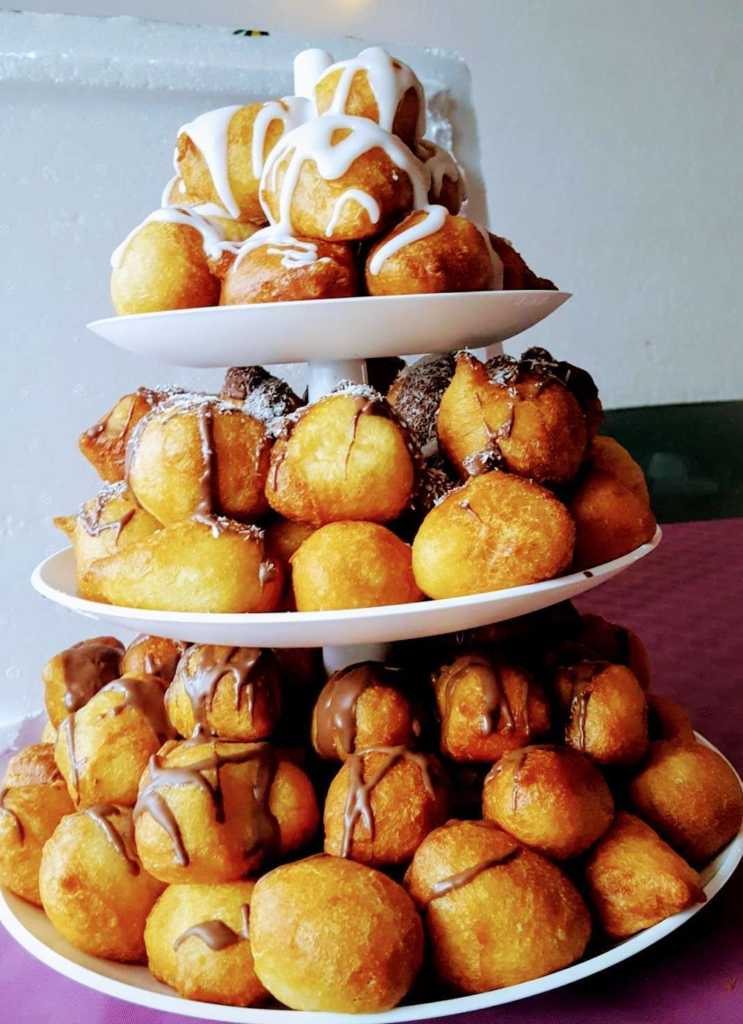
Extraordinary Rites: When Spirituality Meets Identity
The Ritual Abduction of the Bride: Theatre of Engagement
Practised among the Hima of Namibia and the Frafra of Ghana, the so-called 'bride abduction' is not an act of violence but an elaborate social theatre demonstrating man's commitment to family creation. This complex ritual involves the groom arranging the mock abduction of his future wife, and then informing the family with symbolic gifts representing his serious and honourable intentions.
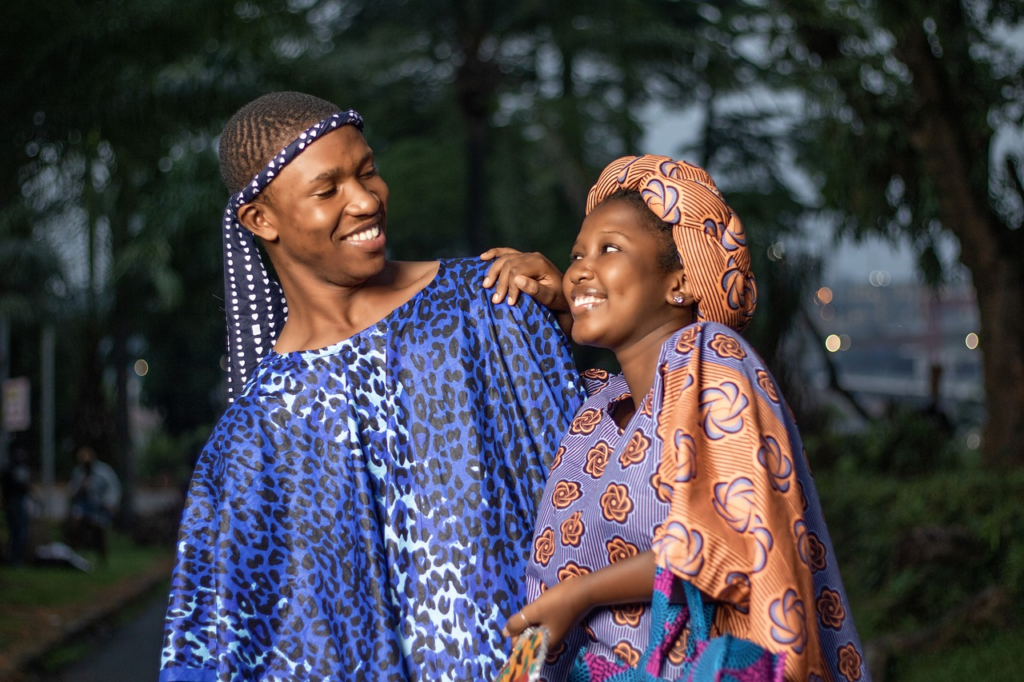
The performance requires the complicity of the entire community and serves to test not only the groom's determination, but also his ability to plan, lead and respect traditions. Only after demonstrating these qualities through concrete gestures can the proposal be accepted.
The Tests of Courage: The Martial Art of Love
Among the Surma of Ethiopia, future husbands compete in ritual fights using two-metre long sticks, in a warrior dance that demonstrates physical strength, courage and the ability to protect the family. These duels are not expressions of violence, but celebrations of virility and determination, conducted according to strict rules that prevent serious injuries.
Competition also serves to create social hierarchies and to allow young women to observe and choose the most suitable mates. It is a natural selection system that combines physical prowess, tactical skill and respect for community rules.
The Dance of Seduction: Wodaabe Male Aesthetics
Among the Wodaabe tribes of Niger and Mali, we witness one of Africa's most fascinating phenomena: men who put on make-up and dress elaborately to seduce future brides. This tradition overturns Western gender roles, turning male seduction into an extraordinary performance art.

The Wodaabe men decorate their faces with natural pigments, wear flamboyant clothes and elaborate jewellery, creating dance performances that enhance beauty, grace and creativity. The women observe and choose, becoming aesthetic judges in a competition where the winner is the one who can best express the harmony between physical form, artistic creativity and expressive skills.
Contemporary Art Meets Tradition: The Work of Sara Galiza
Afro-Brazilian artist Sara Galiza has created an extraordinary work that serves as a bridge between African marriage traditions and contemporary art. His work represents a perfect synthesis of Italian technique and ancestral sensitivity, giving visual voice to millenary stories through the universal language of art.
The Gold Leaf Technique: Materiality and Sacredness
The use of gold leaf is not accidental but deeply symbolic. Since antiquity, gold has been associated with divinity, immortality and spiritual purity. In the artistic tradition, from Byzantium to Gustav Klimt, the gold leaf has always represented the sacred dimension of existence, the divine light that illuminates human affairs.

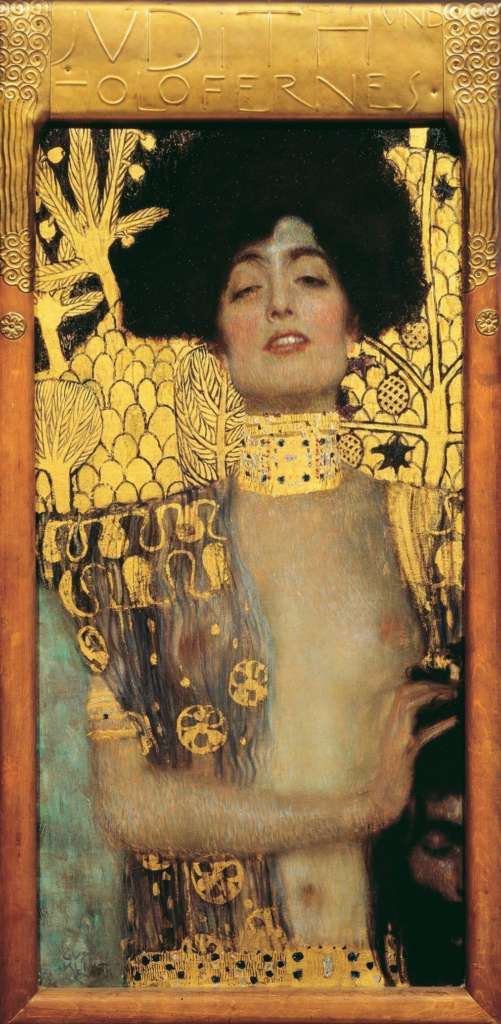
In the African marriage context, gold takes on even deeper meaningsIt represents the blessing of the ancestors, the hoped-for prosperity for the new family and the sacredness of the bond being created. The brightness of the metal reflects natural light, a symbol of life, knowledge and spiritual purity that should guide the path of the bride and groom.
The Four Symbolic Elements: A Philosophy of Marital Life
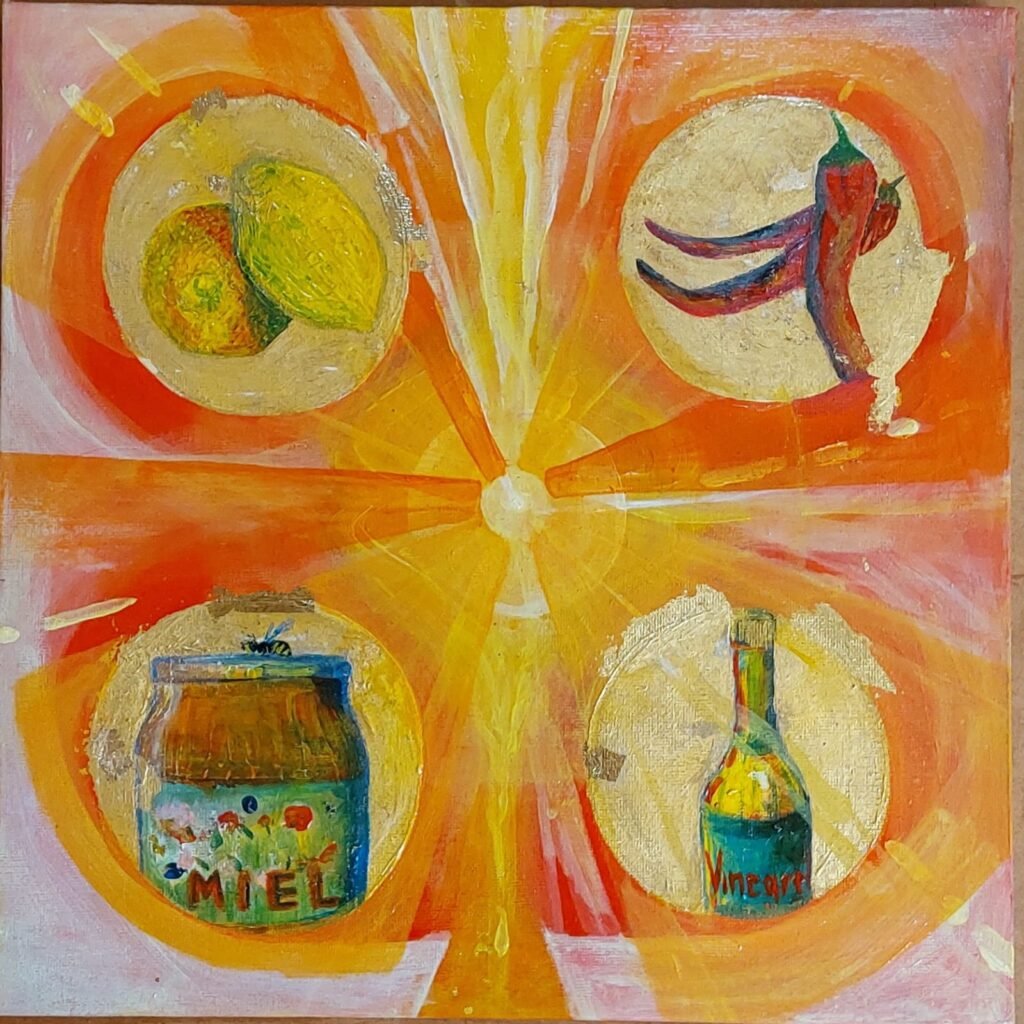
Central to Sara Galiza's work are four elements that represent a true philosophy of married life, derived from the Yoruba traditions of West Africa:
The Lemon symbolises the bitterness and inevitable difficulties that every couple must face. It is not a negative omen, but a realistic recognition that life in two will include moments of trial that will strengthen the bond if faced together.
The Honey represents sweetness, joy and shared hope. It is the element that balances the bitterness of the lemon, reminding the couple that all difficulties can be overcome through love and mutual understanding.
The Chilli evokes the passion and vital energy of the relationship. Not only physical passion, but also enthusiasm for life, determination to pursue common goals and the inner fire that keeps the mutual interest alive.
Vinegar symbolises moments of conflict which, through a process of transformation similar to fermentation, are converted into growth and maturity. It represents the ability to transform tensions into opportunities for deeper understanding.
The Central Light: Spiritual Guide of the Union
This central light does not necessarily represent a specific religious symbol, but rather the universal energy that supports and guides the different stages of married life. It is the ancestral wisdom, the protection of the beneficent spirits and the inner strength of the couple that illuminates the common path.
Specific Rituals: The Wealth of Cultural Diversity
The Kola Nut Ceremony: Symbol of Unity and Healing
In Gambia, Sierra Leone, Liberia and Nigeria, the kola nut plays a central role in marriage ceremonies. This nut, considered sacred, symbolises healing, respect, hospitality and unity. The ritual involves the groom sending a kola nut as a first greeting and declaration of his matrimonial intentions.
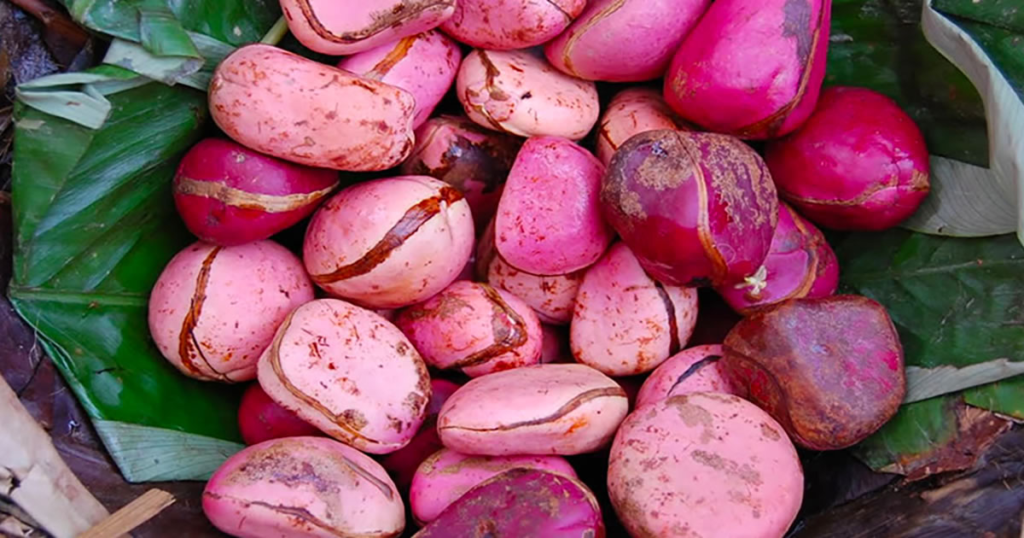
If the proposal is accepted, the ceremony ends with the 'breaking of the kola nut', which is then shared between relatives and elders in an act of spiritual communion that blesses the union. Each person who participates in this ritual becomes a symbolic guardian of the marriage, pledging to protect and support the new family.
The Henna Rite: Body Art and Spiritual Purification
Among the Swahili of Kenya and Tanzania, the pre-wedding celebration can last from two days to a week, culminating in the ritual application of henna. This natural pigment is not only used to decorate the bride's body, but becomes a medium through which older women pass on wisdom, blessings and spiritual protection.
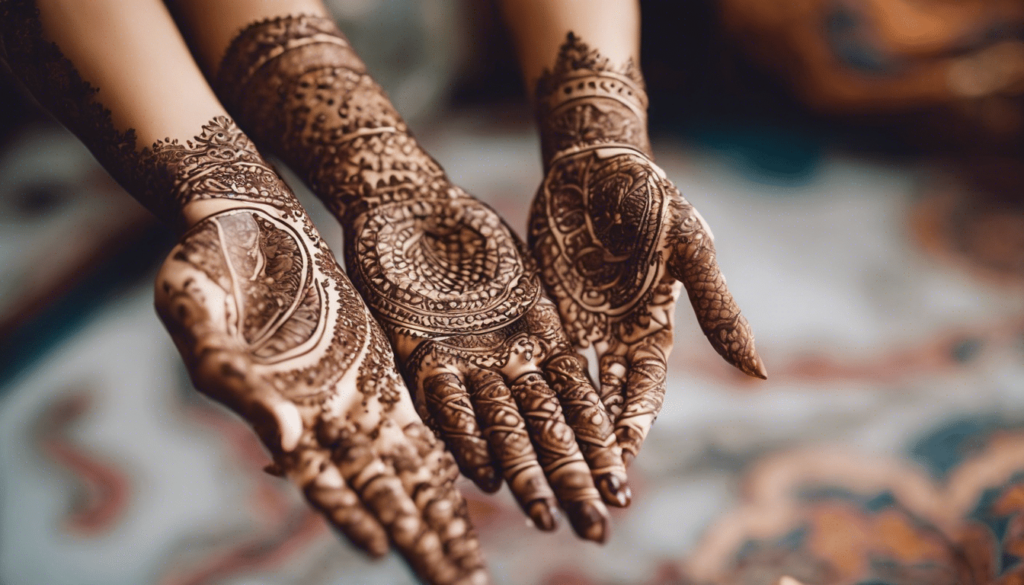
Henna decorations follow traditional patterns that tell stories of fertility, protection and prosperity. Each symbol has a specific meaning: spirals for the continuity of life, floral patterns for beauty and grace, geometric patterns for the order and harmony that should characterise married life.
The Tradition of Submission: Balance and Complementarity
In several African cultures, including those of Burkina Faso among the Mossi, there is a tradition whereby the bride kneels before her future husband during particular moments of the ceremony. This gesture, often misunderstood by Western cultures, does not represent subordination but rather recognition of complementary roles within the family structure.
The bride receives a drink from her younger cousins, tastes it first and then offers it to her husband by kneeling. This ritual symbolises her role as guardian of the family well-being and her responsibility in maintaining domestic harmony, while her husband assumes the role of protector and provider.
Culinary Ritual Traditions: Food as Symbolic Language
The Ritual of the Four Yoruba Tastes
One of the most profound and significant traditions is that of the tasting of the four elements practised by the Yoruba ethnic group, present in Nigeria, Niger and Benin. During this ceremony, the bride and groom literally taste flavours representing the different stages of marriage:
A slice of lemon for sourness, symbolising the disappointments and difficulties that every couple must inevitably face in the course of married life. A sip of vinegar to represent the bitterness of quarrels and difficult moments that must be overcome with patience and understanding. Cayenne, a spicy element, to indicate the passion and vital energy that must constantly animate the couple's relationship. Finally, a spoonful of honey to celebrate the joy, sweetness and shared happiness that represent the ultimate goal of the marriage union.
The Importance of Preserving Traditions in the Modern Age
Cultural Identity as the Foundation of Success
In an increasingly globalised and homogenised world, the preservation of African marriage traditions becomes an act of cultural resistance and identity assertion. For entrepreneurs and professionals of African descent operating in global markets, maintaining ties with one's cultural roots is not an obstacle to modernisation, but a source of strength and authenticity.
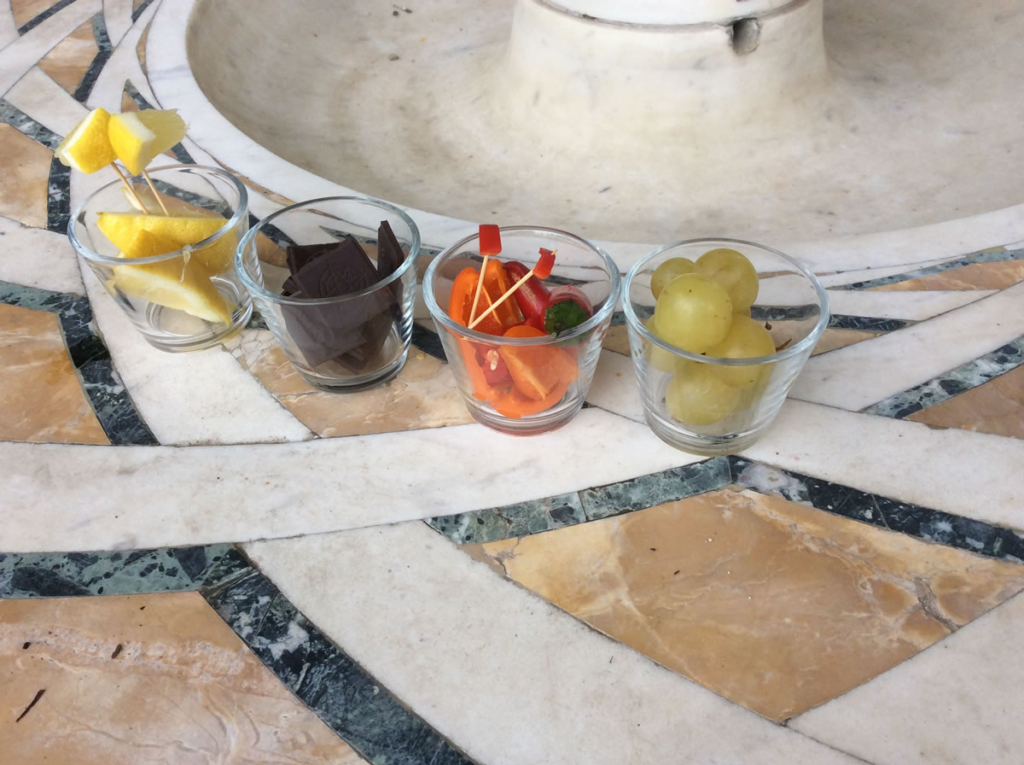
Cultural identity makes it possible to reinforce personal authenticity in a competitive market, to create a distinctive identity that fosters trusting relationships based on authenticity, and to nurture motivation and resilience in professional challenges through recourse to established ancestral values.
Ceremonies as Instruments of Social Cohesion
African marriage rituals are not simply celebrations of the past, but dynamic instruments of social construction that retain their relevance even in diasporic communities. These traditions allow for the preservation of deep ties between generations, favouring the transmission of values and knowledge that would otherwise risk being lost.
Marriage ceremonies become moments of community identity reconstitution, occasions when families dispersed by migration can reunite and reaffirm their cultural belonging. They also foster the creation of strong networks of relationships based on trust and mutual respect, fundamental elements for success in any sphere of life.
Innovation Through Tradition
Respect for African marriage traditions is not in opposition to innovation and progress, but rather represents an inexhaustible source of creativity and inspiration. Many successful entrepreneurs integrate traditional cultural symbols and values into their corporate brands, use traditional rituals adapted for corporate events, and draw inspiration from ancestral leadership models to develop more humane and sustainable management approaches.missioniafrican
Contemporary African art, as Sara Galiza's work demonstrates, finds in marital traditions an inexhaustible source of symbols, colours and meanings that can be reinterpreted to speak to modern sensibilities while keeping their spiritual and cultural depth intact.
The Universal Value of African Traditions
Lessons for the Contemporary World
African marriage traditions offer the contemporary world valuable lessons that transcend cultural and geographic boundaries. The concept of marriage as a union between communities, not just individuals, provides an alternative model to Western individualism, demonstrating how community support can strengthen marital bonds.villaboscogrande+1
The integration of spiritual, artistic and community elements into wedding celebrations creates events that nourish not only the bride and groom but the entire community, transforming marriage from a private consumption into a collective social investment. The symbolic richness of each gesture, colour and flavour shows how it is possible to charge even the most everyday moments of married life with meaning.
Art as a Bridge between Cultures
Sara Galiza's work demonstrates how contemporary art can serve as a bridge between ancestral traditions and modern sensibilities. Her choice of using gold leaf to represent the four elements of Yoruba marriage creates a visual language that speaks simultaneously to African tradition, Italian art and global contemporary sensibility.

This artistic approach suggests how cultural traditions can be honoured and preserved not through fossilisation, but through creative reinterpretation that keeps their deep meanings alive by adapting them to contemporary languages.
A Heritage for Humanity
African marriage traditions represent a cultural heritage of inestimable value that belongs not only to the African continent, but to humanity as a whole. Every ritual gesture, every ceremonial flavour, every symbolic colour tells a story of wisdom accumulated through millennia of human experience in the art of building lasting and meaningful bonds.
African marriage, with its emphasis on community, spirituality and generational continuity, offers an alternative model that can enrich and inspire different cultures, demonstrating that there are deeply human ways of celebrating love that go beyond contemporary fashions and commercial conventions.
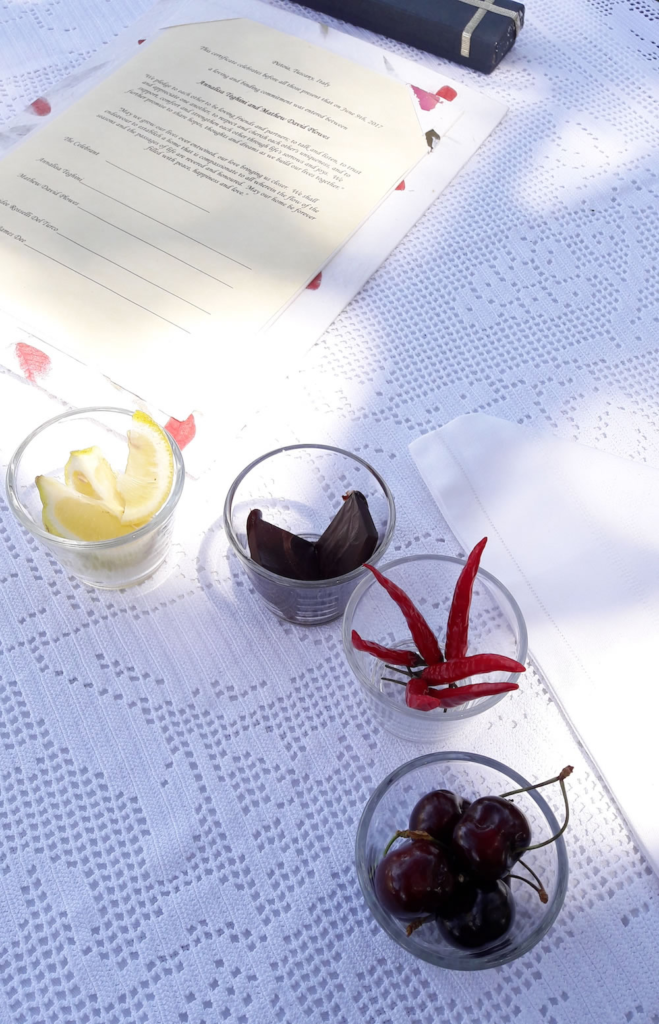
The tasting of the four elements - lemon, honey, chilli and vinegar - remains an emblematic example of how seemingly simple traditions can encapsulate universal wisdom about the complexity and beauty of life in two. As Sara Galiza's gold leaf work demonstrates, this ancestral wisdom can shine in the contemporary world, illuminating the most authentic unions with the golden light of tradition that becomes living art.
In an increasingly fragmented and superficial world, African marriage traditions remind us of the universal value of love as a community commitment, beauty as a spiritual expression, and celebration as an act of gratitude to life itself. To cherish and honour these traditions is to preserve a legacy that transcends geographical and temporal boundaries, keeping the flame of human wisdom alive for future generations.
Sources:
- https://ghanaway.net/2019/05/22/donne-che-sposano-altre-donne-quando-in-africa-si-poteva/
- https://villaboscogrande.it/paese-che-vai-usanze-che-trovi-il-matrimonio-in-africa/
- https://dilei.it/matrimonio/matrimoni-africa-tradizioni/1598430/
- https://blog.wed.tv/it/blog/2021-matrimonio-africa/
- https://www.harpersbazaar.com/it/moda/storie/a30746709/matrimoni-nigeriani-tradizioni/
- https://cardswith.love/it/blog/post/cosa-indossare-a-un-matrimonio-africano
- https://www.etsy.com/it/market/ghana_kente_wedding_dress
- https://www.lafrecciaweb.it/2022/10/26/il-gioiello-antropologico-strumento-di-seduzione/
- https://www.viaggiaresereni.it/matrimonio-africano/
- https://www.manetti.com/opere-d-arte-con-la-foglia-oro/
- https://www.manetti.com/la-storia-della-foglia-oro-nellarte/
- https://kartaruga.it/2016/10/06/foglia-oro-decorazione-maschere/
- https://www.tuscanpledges.com/assaggiare-i-4-elementi/
- https://www.exibart.com/arte-contemporanea/la-forma-delloro-intervista-a-jean-bedez-per-buildingbox-2021/
- https://www.martinapieralli.com/matrimonio-africano-tradizioni/
- https://www.associazionecolibri.org/definizione-di-matrimonio/
- https://www.missioniafricane.it/nuovi-e-affermati-volti-dellarte-contemporanea-africana/
- https://iris.unive.it/retrieve/fcb6c207-6190-4973-a85c-76311c6b5d31/812413-1208915.pdf
- https://www.invictapalestina.org/archives/46030
- https://www.chbrasilpa.it/eventos-do-consulado-honorario-em-palermo-2/
- https://edizionicafoscari.unive.it/media/pdf/books/978-88-6969-506-3/978-88-6969-506-3_TEjwEiC.pdf
- https://www.instagram.com/reel/DKPT5_iMjnQ/
- https://portale.unibas.it/site/home/didattica/formazione-degli-insegnanti/documento23249.html
- https://www.baunat.com/it/ecco-come-si-sposano-le-coppie-africane
- https://www.istitutogp2.it/wp/wp-content/uploads/avvenire_20230115_Avvenire_230115_121559_230115_121636.pdf
- https://afro-elegance.com/it/blogs/mariage-africain/comment-se-passe-le-mariage-chez-les-africains
- https://www.ebay.it/b/Abbigliamento-etnico-africano/155241/bn_16544415
- https://unora.unior.it/retrieve/9b40306f-f253-45c2-af46-d3af8d97097f/NIZZO%202021%20amor%20tomo%20II.pdf
- https://romatrepress.uniroma3.it/wp-content/uploads/2020/01/La-filosofia-africana-e-la-questione-di-genere.pdf
- https://www.etsy.com/it/market/kenya_traditional_dress
- http://www.istitutoeuroarabo.it/DM/il-matrimonio-appunti-per-unantropologia-autobiografica-del-rito/
- https://www.reddit.com/r/wedding/comments/v5xg1t/my_colourful_wedding_dress_fabric_from_ghana/
- https://www.regione.toscana.it/documents/10180/23916/Arte%20africana%20contemporanea/3c564676-0b77-421b-b987-754eeeb40f0a
- https://www.ledijournals.com/ojs/index.php/antropologia/issue/download/173/6
- https://it.aliexpress.com/item/1005009313691507.html
- https://www.instagram.com/reel/DIEOXOqtaoX/
- https://www.giovannifrigo.com/antropologo/appunti-di-antropologia/antropologia-simbolica/
- https://www.artandcultblog.com/2021/09/larte-della-pittrice-fede-galizia-in-mostra-a-trento/
- https://culturalfemminile.com/arte/fede-galizia-la-mirabile-pittoressa/
- https://www.theotherwedding.com/2023/06/21/cerimonia-simbolica-il-rito-dei-quattro-elementi-per-il-tuo-matrimonio/
- https://www.travelonart.com/arte-contemporanea/pablo-picasso-opere/
- https://saveriani.it/giornale/item/se-l-africa-entra-in-casa-riti-religiosi-e-stuzzichini-etnici
- https://it.wikipedia.org/wiki/Pablo_Picasso
- https://www.youtube.com/watch?v=otYZjRs0lGE
- https://it.wikipedia.org/wiki/Fede_Galizia
- https://www.iocreativoshop.com/blog/doratura-foglia-oro/storia-della-doratura
- https://www.raicultura.it/arte/articoli/2021/08/Fede-Galizia-la-pioniera-fb44090c-937a-468a-893b-8ef9c2ffb73b.html
- https://www.pratelli.net/la-tecnica-foglia-oro-un-simbolo-di-prestigio-e-qualita/
- https://community.matrimonio.com/forum/rito-quattro-elementi–t612118
- https://www.artesvelata.it/artemisia-gentileschi-fede-galizia/
- https://affascinarte.altervista.org/la-doratura-ed-il-suo-sviluppo-nel-tempo/







Thank you. A pleasant document imbued with history, tradition, art, spirituality to learn, to be attentive to the symbolism that can unite distant peoples and different cultures ...
Great analytical and precise description